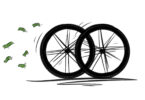The best and most effective upgrade on your bike? A tire that suits you, your bike and where you’ll be using it. With all of gravel riding’s demands, it’s particularly important to have firm and safe contact with the ground. We alternated between our lab coats and putting in the miles on gravel roads, forest highways and flowing trails to find the best all-round gravel tire.
Table of content
- The requirements
- Tire dimensions
- What do the different tire dimensions mean?
- What are tires made of?
- What is the perfect tire pressure?
- The test field
- The test criteria
- Key findings of our test
- Tops and Flops
- The best gravel tire – Vittoria Terreno Dry
Gravel: seemingly omnipresent, and interpreted in many different ways. Broadly speaking, gravel tends to mean any kind of road bike riding that doesn’t involve asphalt. We asked ourselves how the cycling industry will respond to the diverse requirements of “gravel” if it isn’t even able to properly define the term. The gravel movement has risen from a niche existence to the mainstream, splitting itself into subgroups rich in nuance. That said, for many riders, gravel bikes are the first bike they’ll ride with drop bars. Visually, wider tires promise a higher level of security – but can you really rely on them? We tested 12 of the most exciting gravel tires of 2020 for you in our thorough group test. You can find everything you need to know about the most important connection between you and the ground, which tire is best suited to which rider and which option is currently the best gravel all-rounder. Curtains up!
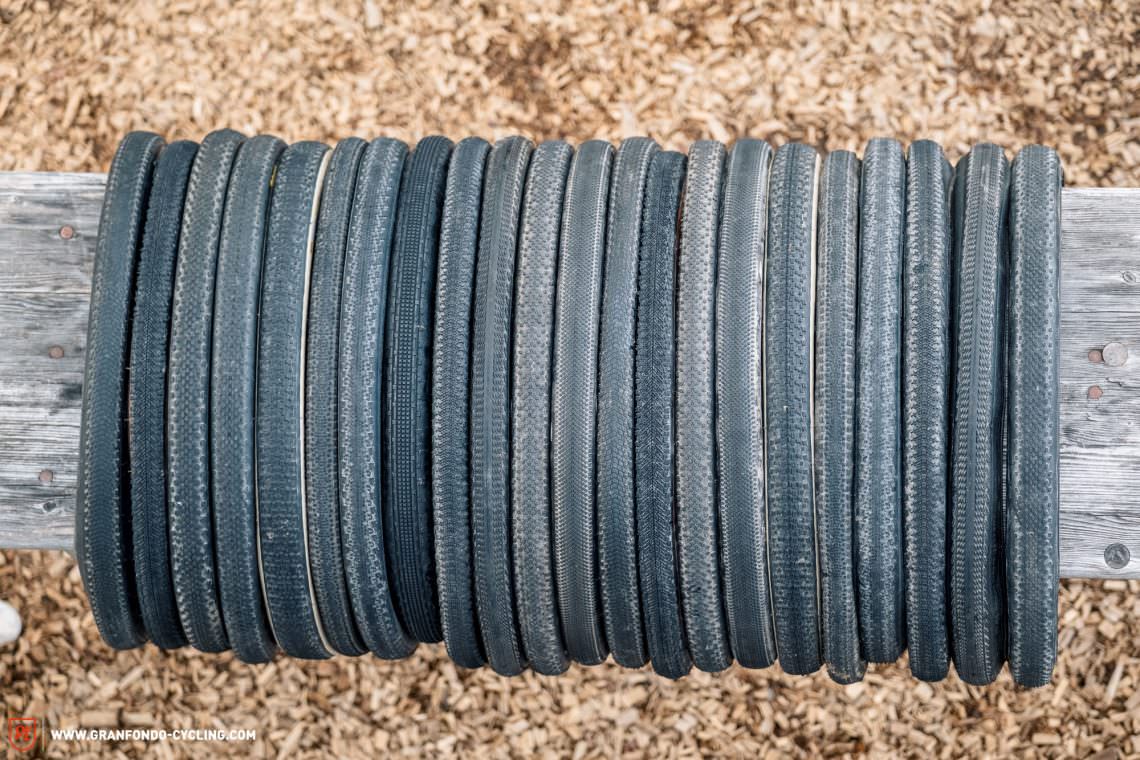

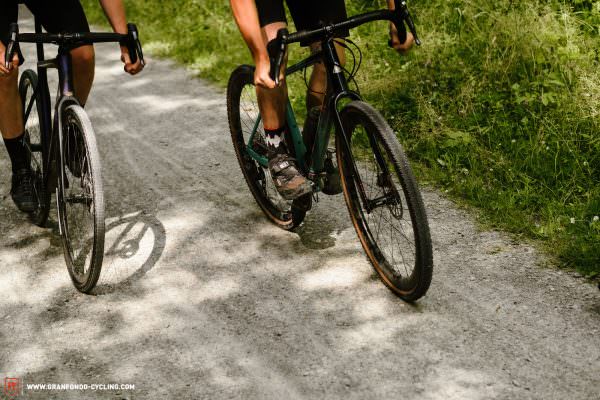
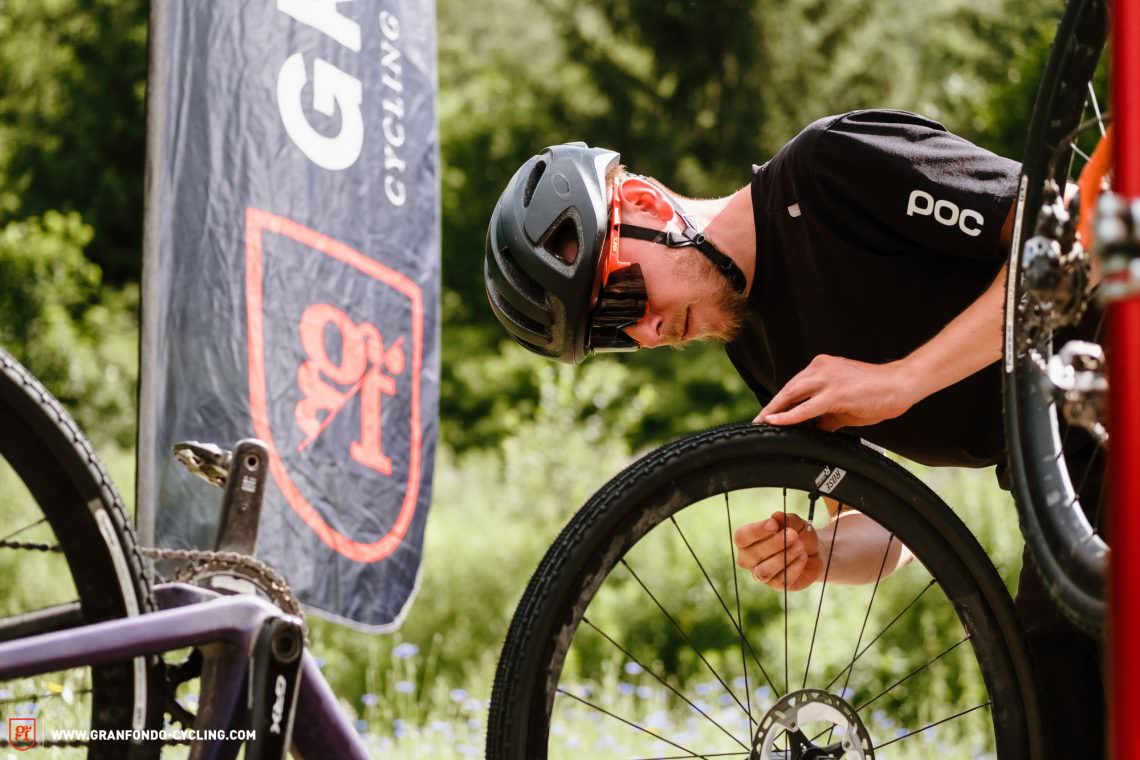
The requirements
On an international level, gravel racers are at it every week, while mountain bikers blast their gravel bikes down trails on training rides, heavily loaded bike-packers crawl through the Gobi desert with 27.4 kg loads and a 5.7 L water tank. In the middle of these extremes, you’ve got average Joe – the weekend rider, the everyman-graveller. He bought a gravel bike because it doesn’t restrict him to asphalt, the riding position is more comfortable, the bike’s stability inspires him with confidence and because it promises to be more durable and versatile than the sinfully expensive carbon machine he’s got standing in the garage. In the search for the best gravel tire, it was important for us to find the best all-rounder: a tire for Joe. This tire should cover as wide a range of applications as possible, offer puncture resistance, roll easily, provide good damping- and comfort capabilities and offer loads of grip – in every situation.
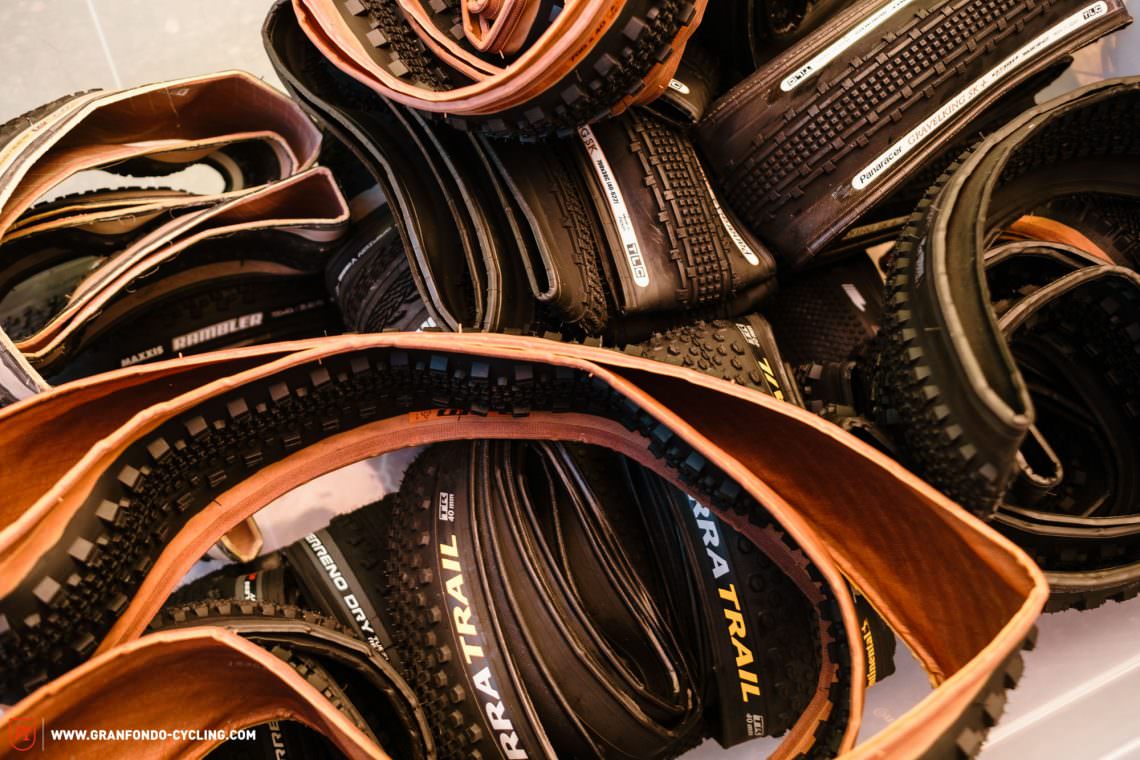
Tire dimensions
The available tire dimensions on the market are as varied as the gravel customer himself. It’s a good thing, allowing everyone to find the right tire to meet their particular requirements. The downside of it is that with increased choice comes increased confusion and indecision. The market for gravel tires, for example, includes 28″ (700 mm) and 27.5″ (650 mm) models in a wide range of widths ranging from 28 mm to 57 mm. To make the group test as accurate and fair as possible, we limited our test field to 700c tires with widths ranging from 37 mm to 42 mm.
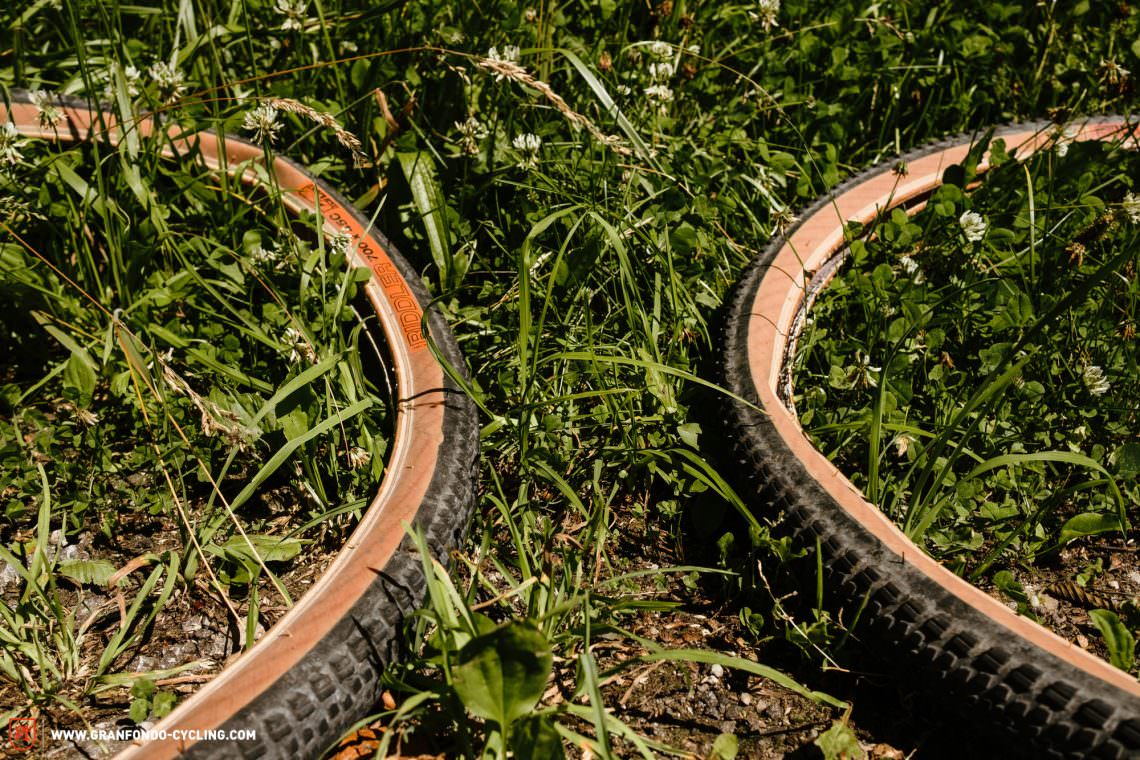
What do the different tire dimensions mean?
Anyone who hasn’t yet gone down the rabbit hole that is tires will most likely be scratching their head over the various size classifications. In the pursuit of clarity, ETRTO (European Tyre and Rim Technical Organization) introduced the European tire and rim standard. For example, the ETRTO size classification “37-622” indicates the width (37 mm) and the inner diameter (622 mm) of the tire. Using this designation makes it easy to match the tire to the correct rim size.
The inch classification (e.g. 28” x 1.40”) indicates the approximate outer diameter (28″) and tire width (1.40″). Using inches is neither precise nor clear. For example, tire diameters of 559 mm (MTB), 571 mm (triathlon) and 590 mm (Dutch touring bikes) are all labelled 26″. Tyres with diameters between 622 and 635 mm are both labelled 28″. Curiously, tires with an inner diameter of 630 mm are labelled 27″. These classifications originate from the times of spoon or plunger brakes. At the time, the exact outer diameter of the wheel was determined by the brake. Depending on tire width, there were different standards for the inner diameter. A few years ago 27.5″ was added to the available sizes. 27.5″ tires have an inner diameter of 584 mm and are identical to the old French size 650B.
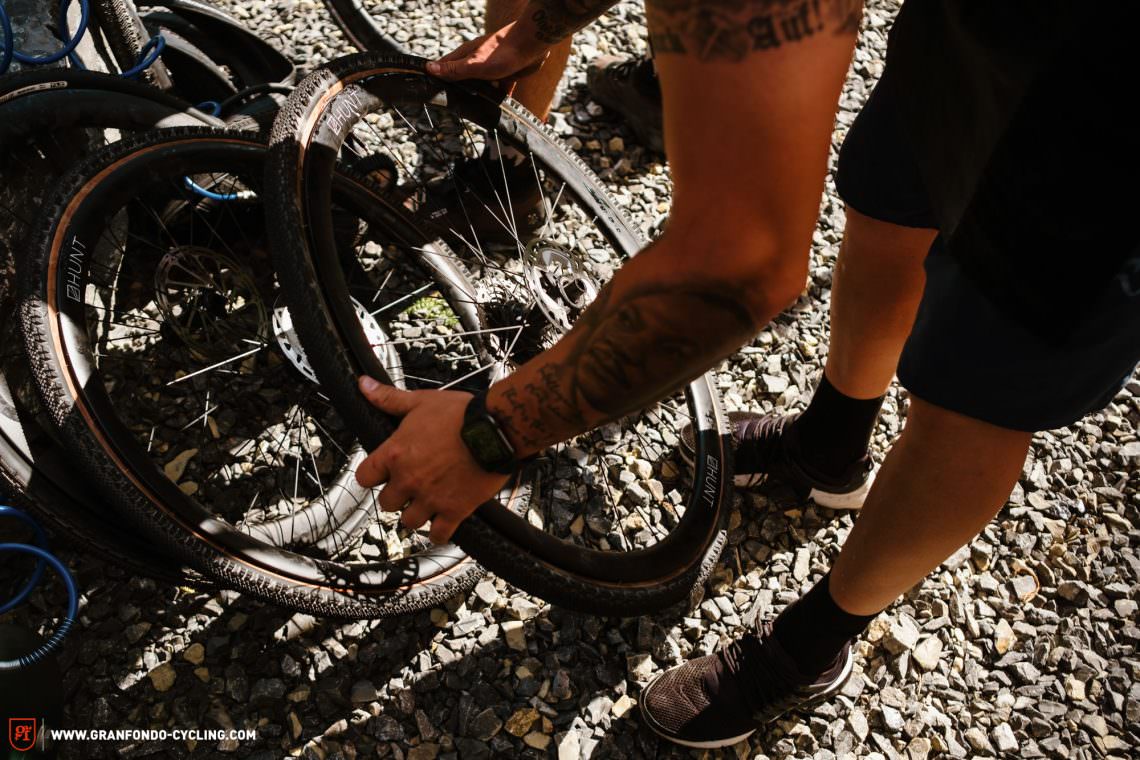
The French size specification (e.g. 700 x 35C) indicates the approximate outer diameter (700 mm) and tire width (35 mm). The letter at the end indicates the inside diameter of the tire. In this case, the C stands for 622 mm. Confusion is caused here by the different ways of handling the size specifications. While Schwalbe historically assign the size 40-622 to the dimension 700 x 38C, Pirelli, for example, simply turn 40-622 into 700 x 40C.

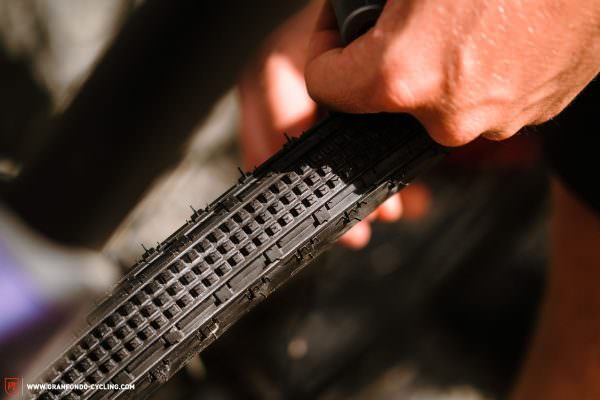
So far, so confusing. But what happens to all these standards once the tire is fitted? Due to the varying dimensions of different rim models, the width of the tire can actually vary according to the inner rim width. As a rule of thumb, as the inner rim width increases by 3 mm, the tire becomes 1 mm wider. Different tire designs can also lead to a more or less pronounced expansion of the tire with increasing air pressure. This means that the tire volume can vary depending on the model, even if the size classification is the same.
As a result, depending on the width of your rim, you may be able to fit the maximum tire size specified for your frame with room to spare, or not even be able to squeeze it in. Regarding tire clearance, you should also be aware that your wheels will flex while braking, accelerating and riding through corners which is a good thing for maintaining traction and increasing comfort. However, if your tires are already close to your frame, then tire rub damaging paint or even your frame is pretty much inevitable.
What are tires made of?
To help you navigate the jargon, the following diagram illustrates the basic components of a bicycle tire. Tyre construction varies greatly from manufacturer to manufacturer and of course from model to model.

What is the perfect tire pressure?
Spoiler alert: unfortunately there is no such thing as THE perfect tire pressure. Due to a multitude of influencing factors, there’s no simple answer to this question. Manufacturers usually recommend a pressure range for their tires, but that only puts you in the ballpark. But your ideal pressure will then change depending on the tire model, its dimensions and the terrain you’re riding on. Our test has shown that it is worth experimenting with tire pressure on a known route and in some cases, even to take the manufacturer’s recommendations with a grain of salt in order to find your ideal tire pressure.
In general, on a perfectly smooth surface, the higher the air pressure, the less the tire deforms and thus the lower the rolling resistance. On gravel and uneven surfaces it’s the other way round: the lower the air pressure, the lower the rolling resistance, up to a limit. This applies to gravel roads as well as soft forest floors and meadows. Why so? A tire with less air pressure can better adapt to irregularities. It doesn’t sink into the ground as much and it can roll ‘through’ bumps rather than having to ride over them.
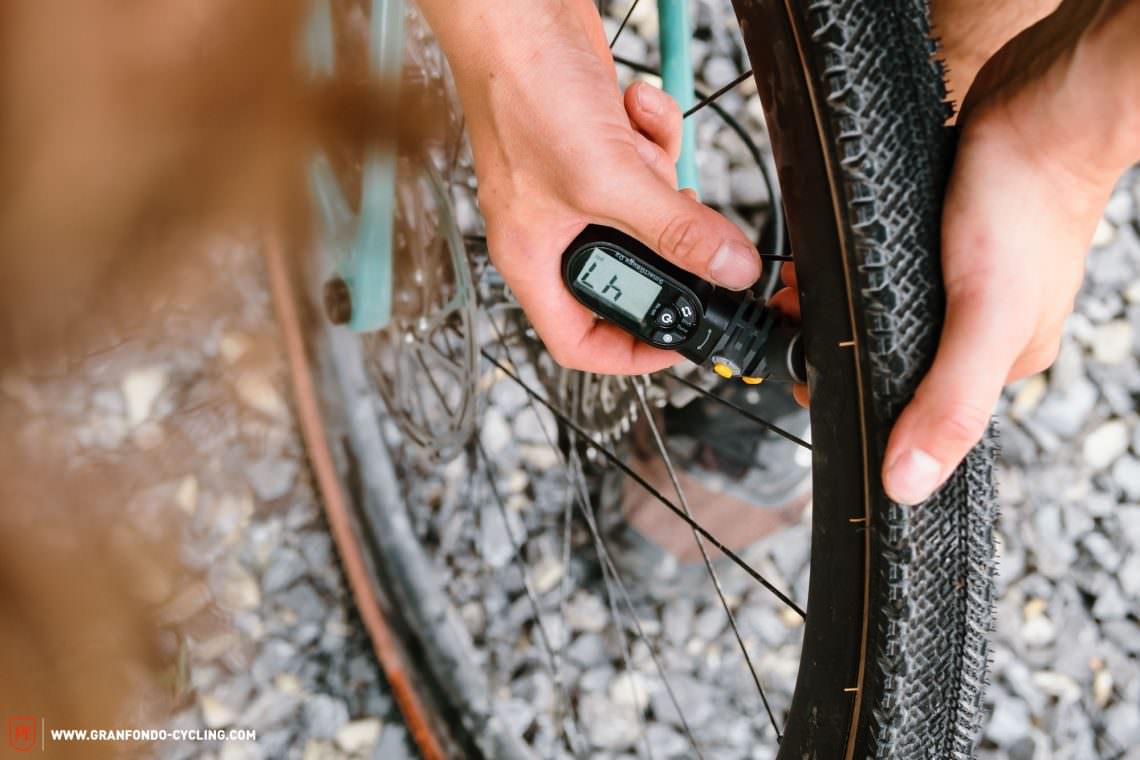
Therefore our suggestion is as follows: even if the tire manufacturer recommends at least 3.4 bar – start by inflating the tire with only 2.5 bar and see how that feels. The tire should be hard enough that it doesn’t bob on compact surfaces. At the same time, it should be soft enough to deform and adapt to irregularities in the terrain. It is important to work out the sweet spot between too hard and uncomfortable and too soft and bouncy. As long as it doesn’t bob when you’re on asphalt, less pressure simply means more comfort and less rolling resistance off-road. Attention: if you like riding up curbs, you should make sure that you have enough pressure in your tires to prevent damaging your precious carbon rims.
It is also important to note that tires with less volume have more rolling resistance at the same pressure. A narrow tire has to deform more to support your weight than a larger volume tire: the tires flatten more, they become less round and more energy is wasted flexing the sidewalls. Wide tires, despite any cries to the contrary, roll more easily than narrow ones! This statement is often met with scepticism, but at the same air pressure, the deformation effect is more pronounced on narrow tires and must, therefore, flex more and waste more energy.
To ensure consistent performance, we recommend checking your air pressure at least once a month. Even the best tubes or tubeless systems lose pressure over time, due to the fact that the air pressures in bicycle tires are much higher and the wall thicknesses much thinner compared to car tires. A pressure loss of 1 bar per month is considered normal. The pressure loss occurs significantly faster at high pressures and significantly slower at low pressures.
The test field
| Tire | Size | Tire width in mm¹ | Tire height in mm¹ | Tire height+ rim heightin mm² | Weight | Price |
|---|---|---|---|---|---|---|
| Continental Terra Speed | 40-622 | 38.3 | 35.7 | 59.7 | 419 g | € 57.90 |
| Continental Terra Trail | 40-622 | 39.4 | 36.1 | 60.1 | 446 g | € 57.90 |
| MAXXIS Rambler SilkShield TR | 40-622 | 39.8 | 36.9 | 60.9 | 438 g | € 49.50 |
| Panaracer GravelKing SK | 40-622 | 41.3 | 38.0 | 62.0 | 401 g | € 45.95 |
| Pirelli Cinturato Gravel H | 40-622 | 39.8 | 37.2 | 61.2 | 482 g | € 59.99 |
| Schwalbe G-One Allround Evolution | 40-622 | 38.1 | 35.6 | 59.6 | 505 g | € 59.90 |
| Schwalbe G-One Bite Evolution | 40-622 | 39.7 | 35.4 | 59.4 | 496 g | € 59.90 |
| Specialized Pathfinder Pro | 42-622 | 41.7 | 40.9 | 64.9 | 568 g | € 41.90 |
| Teravail Cannonball Light & Supple | 42-622 | 40.7 | 37.6 | 61.6 | 537 g | € 52.99 |
| Vittoria Terreno Dry | 40-622 | 40.5 | 37.9 | 61.9 | 483 g | € 48.95 |
| WTB Riddler TCS Light/Fast Rolling | 37-622 | 36.2 | 33.8 | 57.8 | 464 g | € 54.95 |
| WTB Venture Road TCS | 40-622 | 36.3 | 33.6 | 57.6 | 542 g | € 54.95 |
*1 measured at 2.5 bar
*2 test rim: Stan’s NOTUBES Grail 622 x 20.3C (rim height 24.5 mm)
<h3 id="toc_testkriterien"The test criteria
As already mentioned, our aim in this group test was to identify the best all-round gravel tire. To test factors such as the rolling resistance and puncture protection of each tire without riding hundreds of thousands of test kilometres, we accelerated the process somewhat and met with Schwalbe’s engineers in its tire laboratory. Isolated from the outside world, we measured, analysed and talked shop. Of course, an independent test lab would have been ideal, but who was that at their front door? So keep that in mind and take our lab results with a pinch of salt.
To determine the rolling resistance on compacted surfaces, we mounted the tires on the same rim with the same pressure and tested them at 20 km/h on the test bench, one after the other. From our point of view a representative speed at usual Gravel rides. Next, we wanted to determine puncture resistance. We punctured both the central tread (next to the studs, i.e. at the thinnest point in the rubber) and the sidewall several times using different blunt and pointed objects. In doing so we found out what amount of force is needed to puncture the tire and how deep an object would have to penetrate. We also took a look at the resistance to snakebite punctures, when the tire bottoms out on the rim. In the lab, this is tested with a weighted guillotine that is dropped onto the tire until it impacts the rim and makes a hole in the tire. These lab values are a good indicator for tire performance in a controlled environment, but since we’re “realists”, we placed more emphasis on the results of the practical test in our final evaluation – keep it real!

In the practical test, we considered a number of important factors. We focused on the amount of grip the tire was able to generate, which, in combination with the handling indicates how much confidence you’ll have in a tire on different surfaces. Our test loop included asphalt roads, hard-packed gravel roads, soft forest ground and trail sections – uphill and downhill. Besides testing in sunny weather, we also braved the occasional late summer rains. We asked ourselves questions such as: how does the tire accelerate and brake? How well does it roll in a straight line? How does it corner? How much confidence does the tire convey?
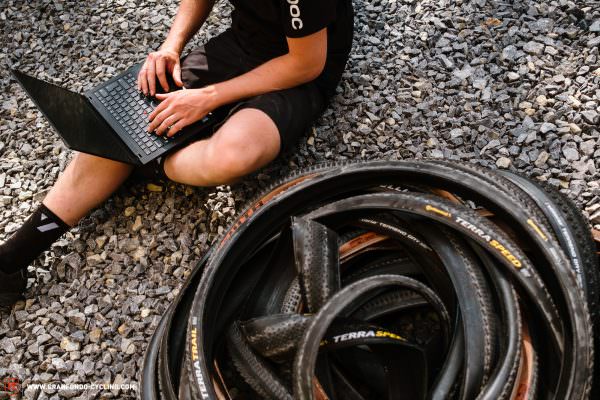

Other important criteria were the damping and the comfort the tires provide. How much feedback do they give from the surface we’re riding on? How much “travel” does the tire offer over roots? How stable and secure does it feel on the trail?
To find out which tire best suited which kind of rider, our evaluation included factors such as how easy the tire is to mount, how it looks and value for money.
Key findings of our test
After preparing for the test, riding hundreds of test kilometres and discussing our findings, we noticed some recurring themes that we’ve summarised here as the key findings of our test.
- More often than not, the minimum pressure specified by the manufacturer is neither comfortable nor does it make sense. The optimal balance between rolling resistance, traction and comfort usually sits significantly under the minimum specified pressure for many of the tires tested. It’s worth taking a pump, a small pressure meter and to do some experimenting! Schwalbe’s Pressure Prof offers some helpful starting points.
- The shoulder knobs need to stick out further than the sidewalls. If that isn’t the case, the delicate sidewall, rather than the grippy and protected tread rubber, is exposed. That’s a recipe for flat tires! Wide rims and narrow tires result in exposed sidewalls. The 37C Riddler had some issues with our 25 mm wide rims.
- The gravel tires in our group test demonstrate two schools of thought. Tires that have been inspired by the road bike world and those that draw their inspiration from mountain biking. Tires like the WTB Venture with its chunky shoulder knobs can be pushed harder and harder into corners when leaned over, letting you take that switchback even tighter. Tires with a road bike heritage like the Panaracer GravelKing or Specialized Pathfinder don’t generally allow quick or spontaneous manoeuvres on loose ground. However, they deliver an enjoyable ride and you can carve through corners by shifting your weight and actively leaning the tires over.
- Handling while braking is more important in the evaluation of braking performance than the braking distance itself. Does the tire skid immediately and break out to the side like the Continental Terra Speed, or does it hold its line, offering a secure and predictable feel like the WTB Venture Road?
- A lighter tire isn’t necessarily faster! On the contrary, the Specialized Pathfinder might not be the best at accelerating, but once up to speed, it rides almost as fast as a road bike tire!
- In the long run, a comfortable tire is a better and faster gravel tire. It will allow you to maintain a more aerodynamic position for longer and let you arrive at your destination fresher than you would otherwise be.
- Tubes are a thing of the past and shouldn’t be seen on a gravel bike any more. A tubeless system can reduce rolling resistance by 10% on average – it’s hard to save so many watts, so cost-effectively. A spare tube in your jersey is recommended, though we didn’t have a single issue during our whole test, except for the hard to seal Panaracer GravelKing. Most modern gravel bikes come with tubeless compatible rims and seating the tire is often possible with just a track pump. Find out how the tubeless setup is done in our detailed tubeless guide for gravel bikes!
- While last year 37 to 40 mm tires seemed to be the sweet spot, the trend seems to be for even wider tires. Currently, tires between 40 and 42 mm offer the widest range of compatibility and will fit most gravel bikes. However, if you have space, you should try 45 mm tires some time. Chunky rubber is pretty cool and is great fun through corners and on bumpy terrain!
- Tires generate trust and security with predictable handling. A reliable tire is particularly important on the uneven terrain you’ll experience on a gravel ride.
- After 30 tire changes, your hands will start to cramp up.
- Tan wall is dead. Black is back! After what feels like a year, the tan wall trend is already over.
Tops and Flops
Just as anything else in life, our group test had a few highs and some lows as well. This is a collection of the tops and flops of the Gran Fondo gravel tire group test.
Tops

The construction quality of all the tires was top notch. We didn't have a single cut, torn off tread block, or flat. Hats off!
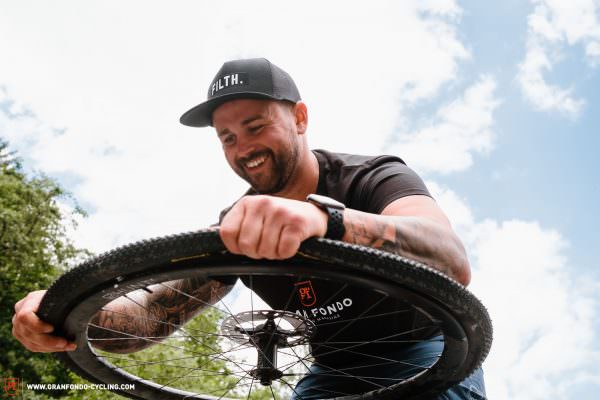
Compatibility problems between different rims and tires are a thing of the past. All the tires were easy to mount on our test rim. That was quite a bit different last year!
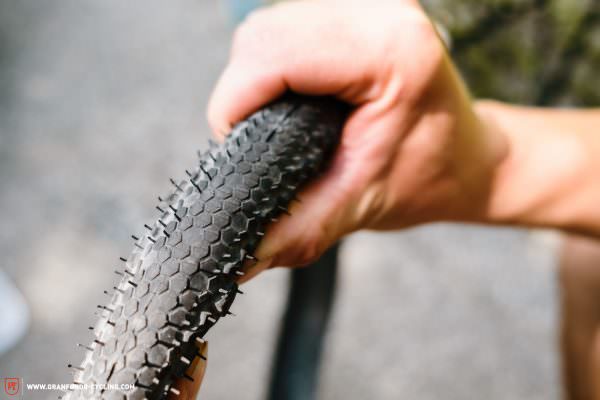
Despite its small volume, this tire offers the best damping by some margin!
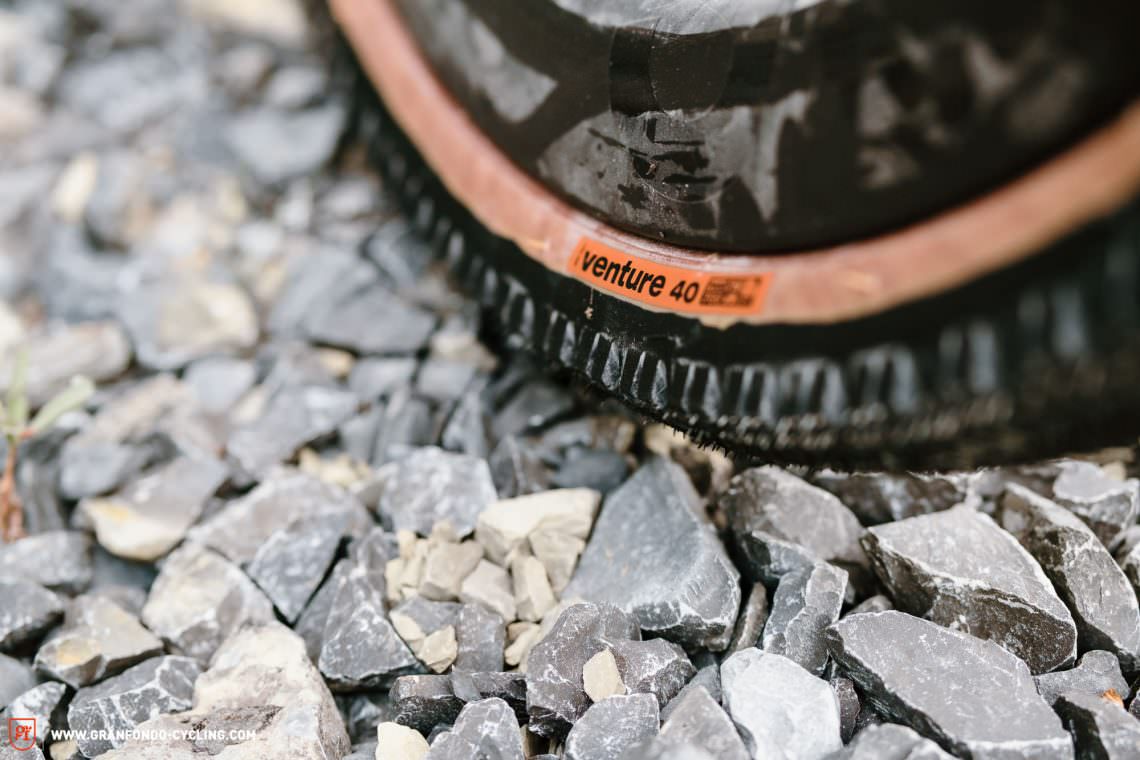
The WTB Venture delivers the grip of a mountain bike tire and can be pushed hard even through corners. If you want to fly on the trails, you’re in the right place here.
Flops
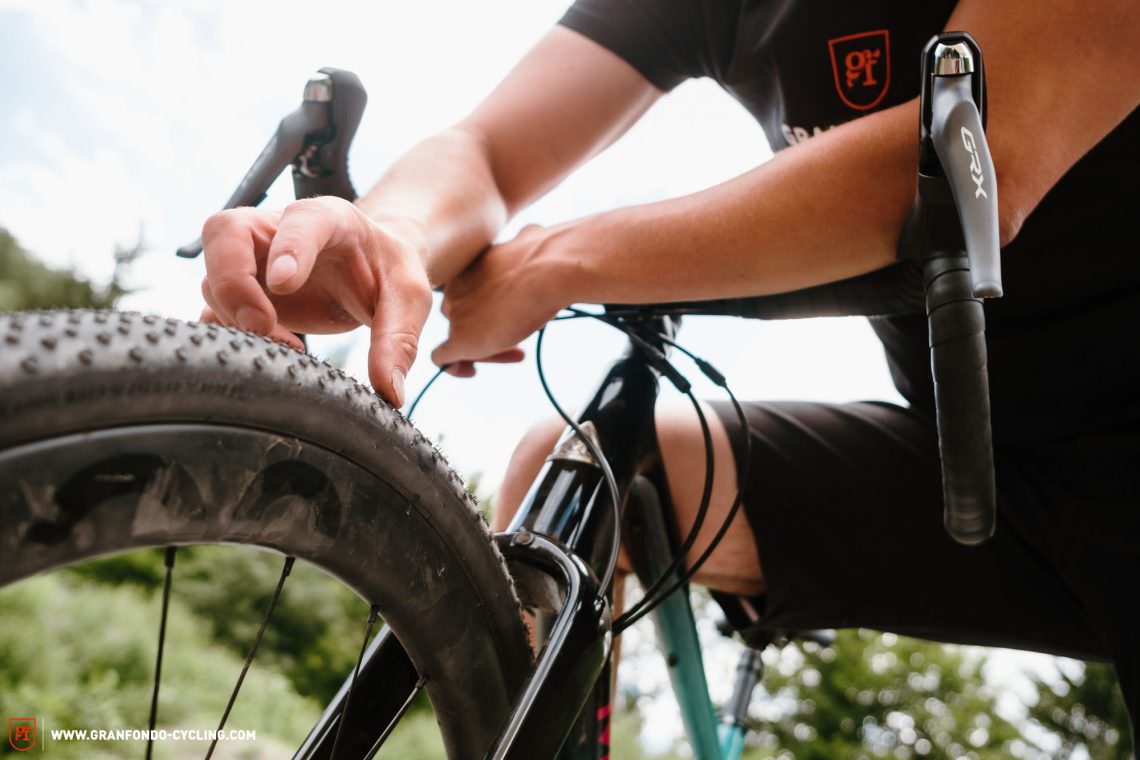
The Continental Terra Speed and Teravail Cannonball have shoulder knobs that are hard to get at. In the best case, you’ll be able to get to them on the roads. However, while gravelling, they are spaced too widely, meaning it’s almost impossible to lean the bike over enough to use them.
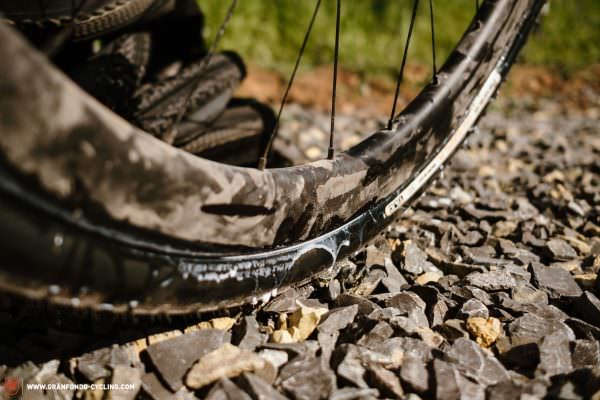
The Panaracer GravelKing SK is the only tire in our test that didn’t seal the first time, requiring extra layers of rim tape and more sealant than the other tires in the test.
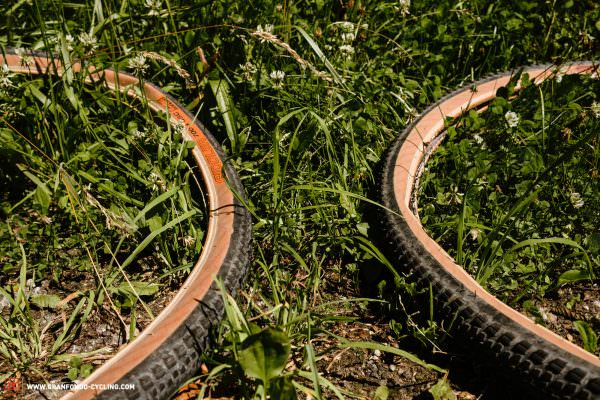
The choice of tire sizes and 650B wheel sizes is too limited with some tires. The WTB Riddler is available only in a 37 mm and then 45 mm size. The de facto standard 40/42 mm size is missing completely. Specialized offer a limited range of only 3 sizes for the Pathfinder, too.

Limited comfort for the Schwalbe and… Schwalbe. Both Schwalbe tires delivered noticeably less comfort than the other tires in our test.
The best gravel tire – Vittoria Terreno Dry
A gravel tire will always be a compromise between the diverse requirements of the gravel market. There are gravel tires that perform better on hard surfaces and others that are true trail kings. We went out to find the all-rounder: a tire that can handle asphalt, compacted gravel and loose forest floor while generating trust and security, allowing the rider to concentrate on their experience and their surroundings. In the end, the Vittoria Terreno Dry came out as the clear winner of our test. Its performance convinced our entire test team. It achieves the perfect combination of low rolling resistance, great grip through gravel corners, lots of comfort for less tiring riding and decent puncture resistance. Well done Vittoria!
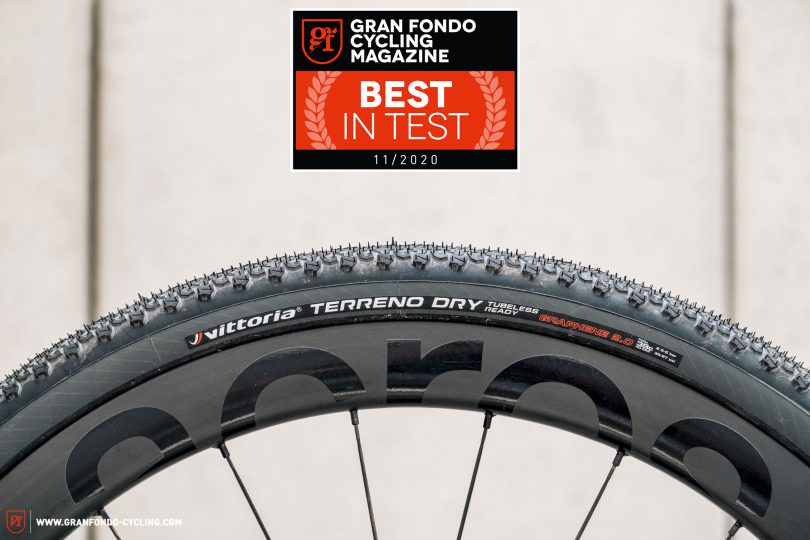
The 12 tires on test: Continental Terra Speed | Continental Terra Trail | MAXXIS Rambler SilkShield TR | Panaracer GravelKing SK | Pirelli Cinturato Gravel H | Schwalbe G-One Allround Evolution | Schwalbe G-One Bite Evolution | Specialized Pathfinder Pro | Teravail Cannonball Light & Supple | Vittoria Terreno Dry | WTB Riddler TCS Light/Fast Rolling | WTB Venture Road TCS
Did you enjoy this article? If so, we would be stoked if you decide to support us with a monthly contribution. By becoming a supporter of GRAN FONDO, you will help secure a sustainable future for high-quality cycling journalism. Click here to learn more.
Words & Photos: Benjamin Topf, Philipp Schwab


